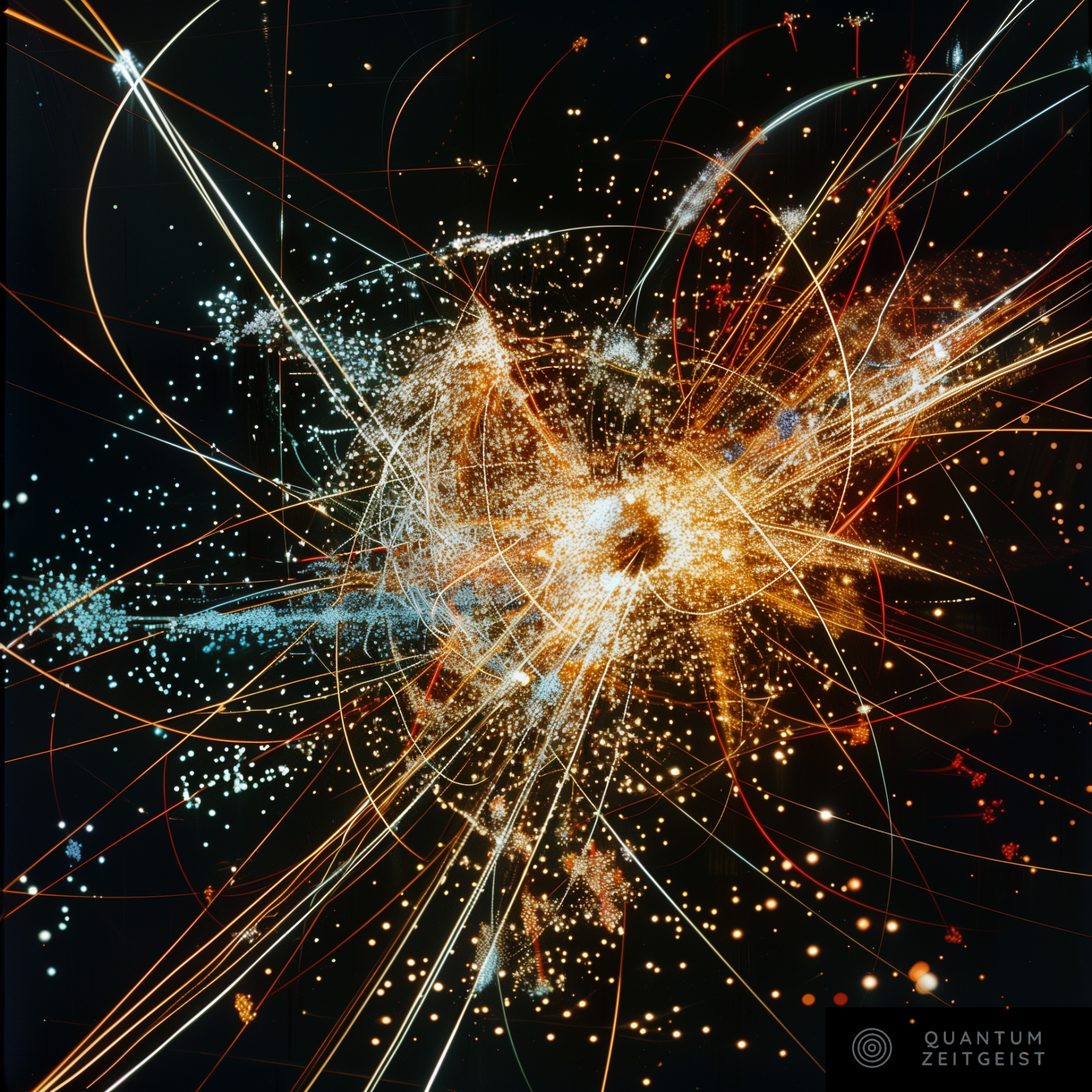MIT researchers have discovered that neutrons can bind to nanoscale atomic clusters known as quantum dots. This finding could lead to new tools for probing material properties at the quantum level and exploring new kinds of quantum information processing devices. The research was conducted by MIT graduate students Hao Tang and Guoqing Wang and MIT professors Ju Li and Paola Cappellaro. The team calls the newly discovered state an artificial “neutronic molecule.” These molecules could potentially be used for storing quantum information. The discovery is based on theoretical calculations and computational simulations.
Discovery of Neutronic Molecules: A Quantum Leap in Material Science
MIT researchers have made a groundbreaking discovery in the field of quantum physics, revealing that neutrons can bind to nanoscale atomic clusters known as quantum dots. This finding, which was previously thought to be impossible due to the nature of neutrons and the strong force that binds them, could provide valuable insights into material properties and quantum effects.
Neutrons are subatomic particles that, unlike protons and electrons, carry no electric charge. This means that while the electromagnetic force is responsible for most interactions between radiation and materials, neutrons are essentially immune to this force. Instead, they are held together inside an atom’s nucleus by the strong force, one of the four fundamental forces of nature. This force is incredibly powerful, but only at very close range, becoming negligible beyond 1/10,000 the size of an atom.
Neutrons and Quantum Dots: A Surprising Interaction
The MIT team discovered that neutrons can actually bind to quantum dots, which are clusters of tens of thousands of atomic nuclei, held together solely by the strong force. This finding is surprising because neutrons do not interact with electromagnetic forces. The interaction here is through the strong force, which is very short-range, effective at a range of 10 to the minus 15 power, or one quadrillionth, of a meter.
The researchers have termed the newly discovered state an artificial “neutronic molecule”. These molecules are made from quantum dots, tiny crystalline particles whose properties are governed more by their exact size and shape than by their composition. The discovery and controlled production of quantum dots were the subject of the 2023 Nobel Prize in Chemistry.
Theoretical Calculations and Computational Simulations
The MIT team’s work is based on theoretical calculations and computational simulations. They used an analytical tool called Green’s function to demonstrate that the strong force was sufficient to capture neutrons with a quantum dot with a minimum radius of 13 nanometers. They also conducted detailed simulations of specific cases, such as the use of a lithium hydride nanocrystal, a material being studied as a possible storage medium for hydrogen.
The researchers showed that the binding energy of the neutrons to the nanocrystal is dependent on the exact dimensions and shape of the crystal, as well as the nuclear spin polarizations of the nuclei compared to that of the neutron. They also calculated similar effects for thin films and wires of the material as opposed to particles.
Potential Applications of Neutronic Molecules
The discovery of neutronic molecules could have significant implications for the field of quantum information processing. One potential application is the precise control of the neutron state. By changing the way the quantum dot oscillates, it may be possible to direct the neutron in a specific direction. Neutrons are powerful tools for triggering both fission and fusion reactions, but so far it has been difficult to control individual neutrons. These new bound states could provide much greater degrees of control over individual neutrons, which could play a role in the development of new quantum information systems.
Another possible application is for a kind of imaging, using neutral activation analysis. Neutron imaging complements X-ray imaging because neutrons interact more strongly with light elements. It can also be used for materials analysis, which can provide information not only about elemental composition but even about the different isotopes of those elements.
Future Research and Challenges
While the discovery of neutronic molecules is a significant step forward, creating such molecules in the lab presents a challenge. It requires specialized equipment to maintain temperatures in the range of a few thousandths of a Kelvin above absolute zero. However, the potential benefits of this discovery make it a promising area for future research.
The research was supported by the U.S. Office of Naval Research. The team’s findings have been published in the journal ACS Nano.
External Link: Click Here For More

